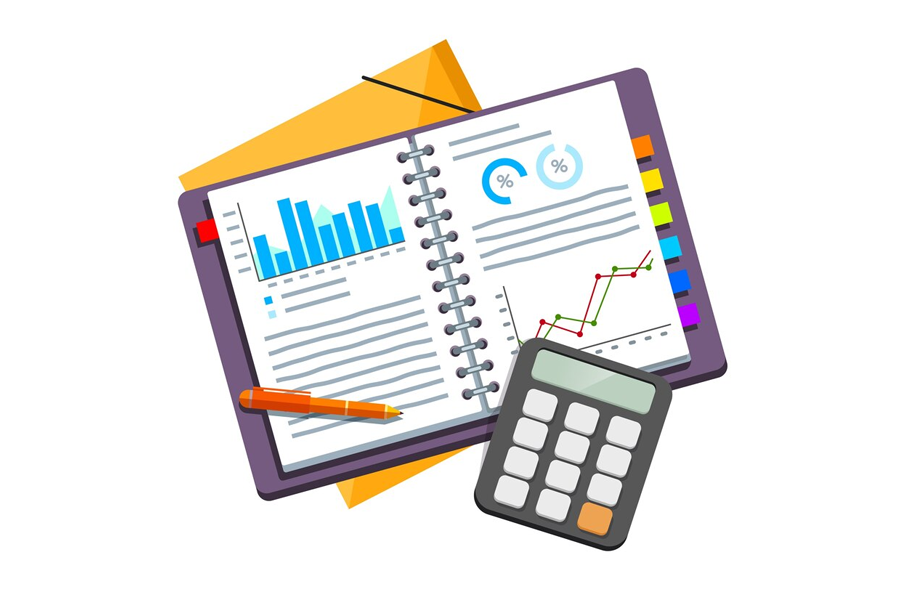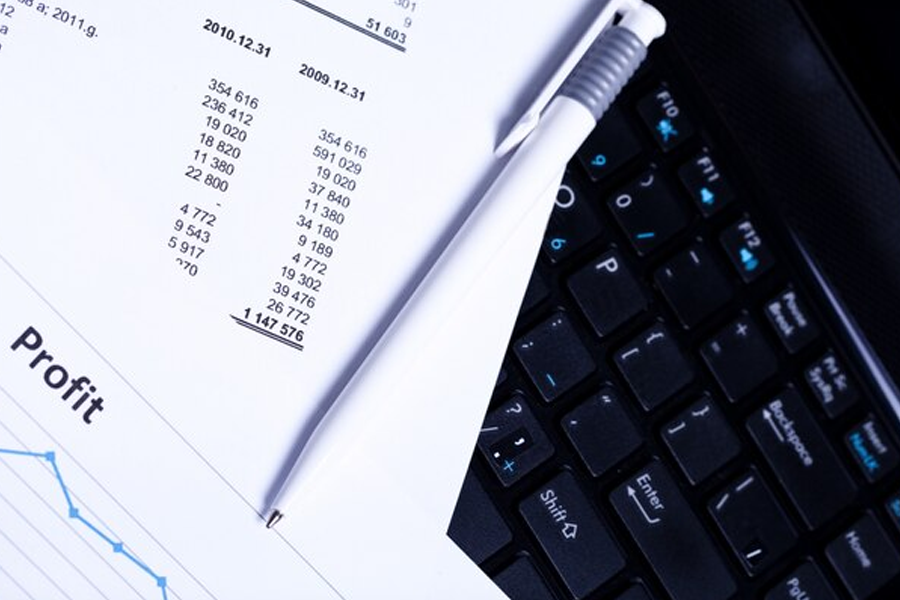If you’re a small business owner with no numbers guy or accounting department, traditional cash-based accounting might be your go-to way of making records. But simply recording cash transactions is messy, inaccurate, and a pain.
Accrual accounting is an easier and more efficient way of recording financial transactions. It’s accurate, easy, and sophisticated. But what is it, and how can you use it?
In this article, we will discuss its methods, principles, and how your e-commerce business will benefit from it.

Accrual Accounting: Definition and Purpose
The accrual accounting method records your profit and cost when they happen – not when the money passes from customer to business. To better illustrate, let’s look at it from the context of e-commerce in the Philippines.
Imagine that you’re a Luzon-based t-shirt shop. Through your online shop, a customer in Mindanao ordered a cat-printed shirt with a cash-on-delivery payment. You plan to ship it in a few days.
Through this method, you record the sale when the customer taps Buy now on their phone, though they will only hand over their cash payment when they receive their cat shirt. You recognize the sale at the moment of order.
This shows the core of the accrual-based accounting method: immediacy. Because of its advantages, the accrual basis of accounting is officially endorsed by bodies like the Internal Revenue Service (IRS) of the US, Generally Accepted Accounting Principles (GAAP), and International Financial Reporting Standards (IFRS).

Difference Between Accrual Accounting and Cash Accounting
For e-commerce businesses, transactions happen quickly and in many different ways. The cash method accounting you use is not up to the task. Thus, you should understand the key differences between the two primary accounting methods.
Let’s review them below:
- Timing of recognition: The accrual method acknowledges revenue and expenses when they happen. In contrast, cash accounting recognizes transactions only when the money officially comes in/out.
- Financial reporting realism: Accrual accounting aligns more realistically with the economic activities of buying and selling. Cash accounting, on the other hand, can present a distorted picture, especially for businesses with deferred payments.
- Profit reporting accuracy: Accrual accounting works by matching revenues with the corresponding incurred expenses in generating them in the same reporting period. Cash accounting can mislead profit figures, focusing solely on cash transactions.
Understanding the distinction between accrual and cash accounting empowers business owners to make better decisions. It provides a clearer insight into the company’s financial performance and aids in planning, budgeting, and assessing.
Revenue Recognition and Matching
The key accounting principles of accrual-based accounting revolve around revenue recognition and matching. By following these principles, accrual-based accounting provides a more accurate picture of a company’s financial health and performance.
Learn more below:
- Matching Principle: In the accrual method, revenues and expenses must be recorded in the same period. This ensures you properly recognize financial events by matching revenues against expenses when transactions occur, such as a sale or a purchase.
- Revenue Recognition Principle: This principle recognizes income and expenses as soon as the transactions occur, regardless of when the cash is received or paid. This means that you record revenue when it is earned and expenses when they are incurred rather than waiting for cash to be exchanged.
This is especially important for e-commerce businesses, where sales, deliveries, and expenses might not align with cash movements. Things like pre-orders, deferred payments, and even installments are common — especially in the Philippines, where Cash on Delivery (COD) is the preferred payment method for most people.

Recognizing Revenues and Expenses
The critical methodologies of accrual accounting make it easier to ensure your company’s financial health. The processes that this accounting method follows are revenue recognition and expense recognition.
Accrual accounting dictates that revenue should be recognized when earned, regardless of when the cash is received. For example, let’s say you’re an e-commerce business that sells subscription services. Under this method, you write down the profit under your accounts receivable when the subscription period begins – not when the customer’s credit card transaction occurs. This is called an accrued revenue.
Accrued expenses are the same. In accrual accounting, expenses are recorded when they contribute to revenue generation when the bought asset becomes usable. Imagine you’re buying inventory for the holiday season.
Accrual accounting differs from the cash basis method because it recognizes the expense when you receive the goods, even when you might hand over the cash payments only by the end of the month. Instead, you enter that amount into your accounts payable tab. The inventory becomes an accrued expense: costs put on the books before it’s paid.
Accrual Accounting Cycle Explained
The accrual accounting cycle is the steps that businesses follow to record financial transactions. As an e-commerce business, you can leverage the accrual accounting cycle to enhance your accounting operations.
Consider you have an online retail fashion store in the Philippines. Throughout the month, the business conducts sales transactions, ships products, and incurs various expenses such as advertising costs and inventory purchases.
Your accrual cycle will be as follows:
- Recording transactions: As you process the orders, accrual accounting recognizes revenues at the point of sale, not when customers make payments. Simultaneously, expenses like advertising fees and inventory costs are recorded when incurred.
- Adjusting entries: Towards the end of the accounting period, the business reviews its accounts to ensure accuracy. You offer a 30-day return policy, and at month-end, estimate that a certain percentage of sales might be returned. Due to this you adjust the entries to reflect the potential return expenses.
- Closing process: As the reporting period concludes, temporary accounts, including sales and expense accounts, are closed to prepare for the next one. In our scenario, you close out the promotional campaign expense account and consolidate the costs associated with specific marketing efforts.
This cycle involves recognizing revenues and expenses, adjusting entries when the accounting period ends, and closing temporary accounts to prepare.
Compare this to the cash basis accounting method, where the records will most certainly be messy and inaccurate because the money would be changing hands very quickly in such a short period.

Financial Statements in Accrual Accounting
Financial statements are critical to show your financial position. The three primary statements – Balance Sheet, Income Statement, and Cash Flow Statement – offer a comprehensive view of a company’s operations.
See more below:
- Balance sheet: This provides an accurate picture of non-current and current assets, liabilities, and equity at a specific point in time, portraying the business’s financial health.
- Income statement. This financial statement outlines revenues, expenses, and profits over a defined period.
- Cash flow statement. This paper delineates the sources and uses of cash during the same timeframe.
These statements provide insights into liquidity and profitability in e-commerce, where product management and cash flow is crucial.
Accrual Accounting for Long-Term Assets and Long-Term Liabilities
Recording long-term assets and liabilities is a headache for cash basis accounting systems. The mismatch between the timing of cash flows and the recognition events makes it difficult to record the transaction, and you’ll likely suffer.
In contrast, accrual accounting is far more accurate. Long-term assets, like property or equipment, are gradually recognized over their useful life. Simultaneously, long-term liabilities, such as loans, are recorded as they accrue.
Cash basis accounting will struggle to capture the complexity of these transactions.
Accrual accounting enhances financial transparency because it’s much easier and cleaner to conduct — long-term assets and liabilities are put down in the statements in the same reporting period they occur.
This aids businesses, especially those in e-commerce, make informed decisions and strategize for sustained growth.
Accrual Accounting and Auditing: Compliance and Reporting Standards
Compliance and reporting standards are a very important part of the financial accountability for businesses.
Established by regulatory bodies, these standards dictate how financial information should be recorded, presented, and disclosed. Governments, investors, and various third parties will look at a business’ accounting compliance, and their judgments can make or break your reputation.
So, you should have a good accounting framework when it comes to reporting.
Accrual accounting adheres to compliance and reporting standards by recognizing revenues and expenses in a better way. This provides a more accurate representation of your transactions and financial standing.
Plus, this accounting method’s emphasis on matching expenses with the revenue they generate enhances the reliability of financial statements. This systematic approach reduces the likelihood of financial misstatements, promotes investor confidence, and facilitates smoother audits. Accrual accounting will enhance the credibility of your financial reporting, something that’s difficult for cash-based accounting to achieve.
Final Thoughts
Simply jotting down your spreading when money changes hands isn’t enough – not when it creates a messy, inaccurate, and noncompliant financial snapshot of your business.
As a business in the robust e-commerce environment of the Philippines, you need to optimize your operations as much as possible. This includes streamlining how you handle your money, which means moving away from cash-based accounting.
This article discussed the major accounting methods, proving that accrual accounting is more valuable. This accounting methodology: its definitions, principles, procedures, and everything else you need to know were all discussed.Now, get rid of those headache-inducing books. Embrace accrual accounting and make your financial recording all the more stress-free.
Frequently Asked Questions
Why is accrual accounting considered more accurate than cash accounting for e-commerce businesses?
The accrual method of the two accounting methods captures the economic reality of transactions in real-time. Sales and deliveries often don’t align with immediate cash flow for e-commerce, so accrual accounting is more accurate because revenues and expenses are noted when they occur, not just when cash changes hands like the cash method.
What is modified accrual accounting?
Modified accrual accounting is commonly used by governments rather than by public companies. It blends elements of accrual and cash accounting. Income in asset accounts is recognized when they become available and measurable, while expenses are deferred to liability accounts when they are incurred.
What is a cash account in accrual accounting?
A cash account is an asset account that tracks the amount of cash a company has at any given time. This account is part of the company’s balance sheet and records all transactions involving cash, such as cash receipts from sales, cash payments for expenses, etc.